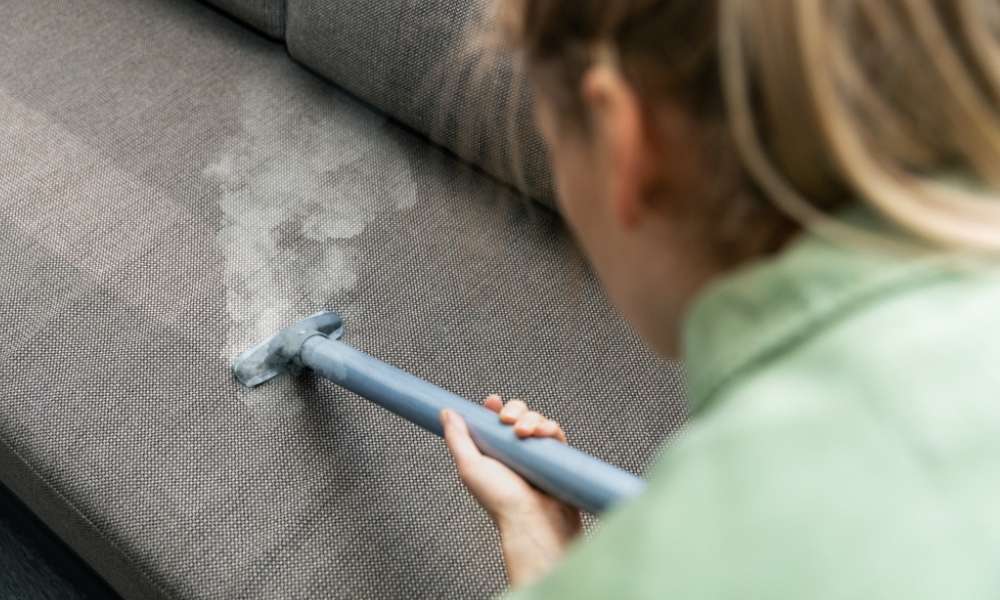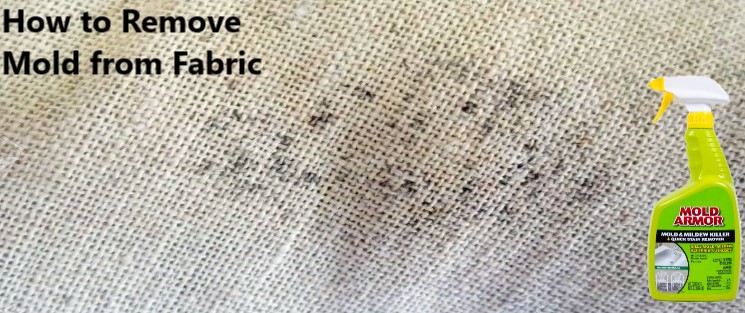This article discusses How To Remove Mold From Fabric Furniture Without Bleach, hopefully providing additional knowledge for you.

How to Remove Mold From Fabric Furniture Without Bleach: A Guide for Every Home
Imagine curling up on your favorite couch, only to be greeted by a musty smell and unsightly mold patches. It’s a nightmare for any homeowner. Mold can pose serious health risks, not to mention, it ruins the aesthetic appeal of your furniture. But fear not! Removing mold from fabric furniture without bleach is entirely possible.
Bleach, while effective at killing mold, can damage delicate fabrics. Fortunately, there are plenty of natural and safe alternatives that can get the job done just as well. In this comprehensive guide, we’ll delve into the world of mold removal, providing you with expert tips and actionable steps to restore your furniture to its pristine condition.
The Unseen Danger: Understanding Mold and Its Impact
Before we dive into the removal process, it’s essential to understand what mold is and its potential consequences. Mold is a fungus that thrives in moist, dark environments. It feeds on organic matter, including fabric, paper, and wood.Exposure to mold can trigger various health issues, such as allergies, asthma, and respiratory problems. It can also cause skin irritation and eye discomfort. In severe cases, prolonged exposure to mold can lead to lung infections and other health complications.
A Comprehensive Guide to Mold Removal
Now that you’re aware of the risks associated with mold, let’s explore the steps involved in removing it from your fabric furniture:- Identify the Mold: Before you can eliminate the mold, you need to locate it. Mold typically appears as black, green, or white patches on the fabric.
- Vacuum the Surface: Use a vacuum cleaner with a soft brush attachment to remove any loose mold spores and dirt.
- Create a Cleaning Solution: Here are some effective cleaning solutions you can use:
- White vinegar: Mix equal parts white vinegar and water in a spray bottle. This solution is acidic, which helps kill mold spores.
- Hydrogen peroxide: Combine 3% hydrogen peroxide with an equal amount of water in a spray bottle. Hydrogen peroxide has bleaching properties that can lighten mold stains.
- Baking soda: Make a paste by mixing baking soda with a small amount of water. Apply the paste to the moldy area and allow it to sit for several hours.
- Apply the Solution: Spray or apply the cleaning solution to the moldy area. Allow it to penetrate for 15-30 minutes.
- Scrub the Area: Gently scrub the moldy area with a soft cloth or brush. Avoid using abrasive materials that can damage the fabric.
- Rinse the Area: Use a damp cloth to rinse the area thoroughly. Blot it with a clean towel to remove excess moisture.
- Dry the Fabric: Allow the fabric to air dry completely. You can also use a fan or hair dryer on a low heat setting to speed up the drying process.
Latest Trends and Developments in Mold Removal
As technology advances, new and innovative methods for mold removal are emerging. Here are some of the latest trends:- Ozone Generators: Ozone generators produce ozone gas, which is a powerful oxidant that can kill mold spores.
- UV Light: Ultraviolet light has been shown to be effective at killing mold spores and preventing their growth.
- Enzymatic Cleaners: Enzymes are biological catalysts that can break down mold’s cell walls, making it easier to remove.
Tips and Expert Advice from the Pros
To enhance your mold removal efforts, here are some invaluable tips from experienced professionals:- Test the Cleaning Solution: Before applying the cleaning solution to the entire moldy area, test it on a small, inconspicuous spot to ensure it does not damage the fabric.
- Ventilate the Area: Keep windows and doors open while cleaning to ensure proper ventilation and prevent the spread of mold spores.
- Wear Protective Gear: Wear gloves and a mask while cleaning to protect yourself from exposure to mold spores.
- Seek Professional Help: If the mold infestation is severe or covers a large area, it’s best to seek professional help from a mold remediation company.
Frequently Asked Questions (FAQs)
A: Some household cleaners, such as bleach and ammonia, can be effective at killing mold, but they can also damage delicate fabrics. It’s best to use natural and safe alternatives.
A: Regular cleaning and vacuuming can help prevent mold growth. Aim to clean your furniture at least once a month.
A: Mold can appear as black, green, or white patches on the fabric. You may also notice a musty smell or feel dampness on the furniture.
A: Yes, but it requires a different approach. Use a solution of rubbing alcohol and water, and test it on an inconspicuous area first.
Conclusion
Removing mold from fabric furniture without bleach is not as daunting as it may seem. By following the steps outlined above and implementing the expert advice provided, you can effectively eliminate mold and restore the beauty of your furniture. Remember, regular cleaning and preventive measures are crucial to maintaining a mold-free home.
If you have any questions or concerns about mold removal, don’t hesitate to reach out to a professional. By taking proactive steps, you can create a healthy and comfortable living environment for yourself and your loved ones.
Are you interested in learning more about mold removal or other home maintenance topics? Let us know in the comments below, and we’ll be happy to provide additional information and resources.

Image: imrunning.org
We express our gratitude for your visit to our site and for taking the time to read How To Remove Mold From Fabric Furniture Without Bleach. We hope this article is beneficial for you.